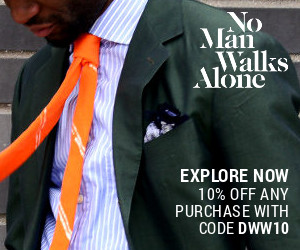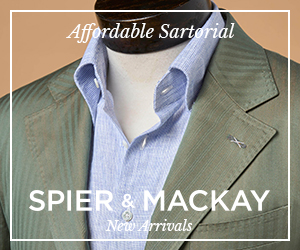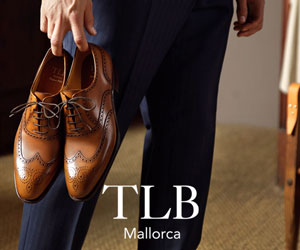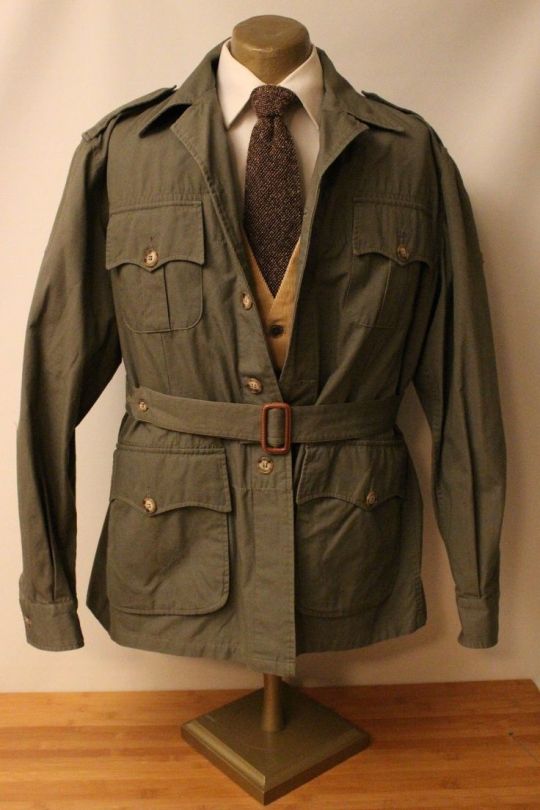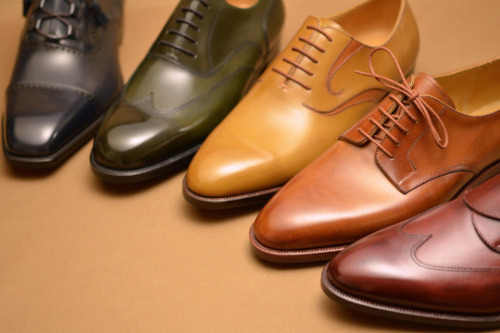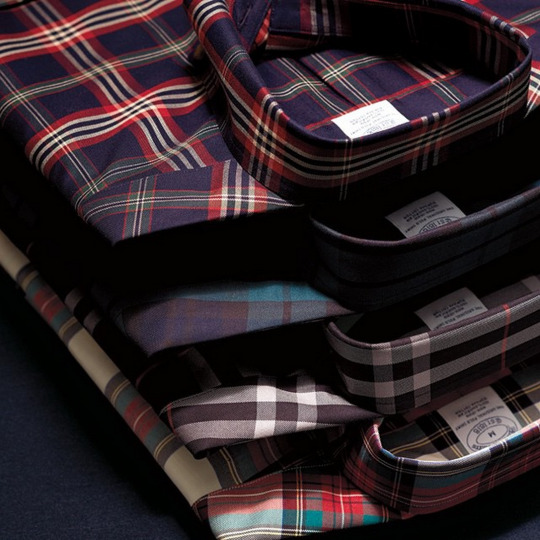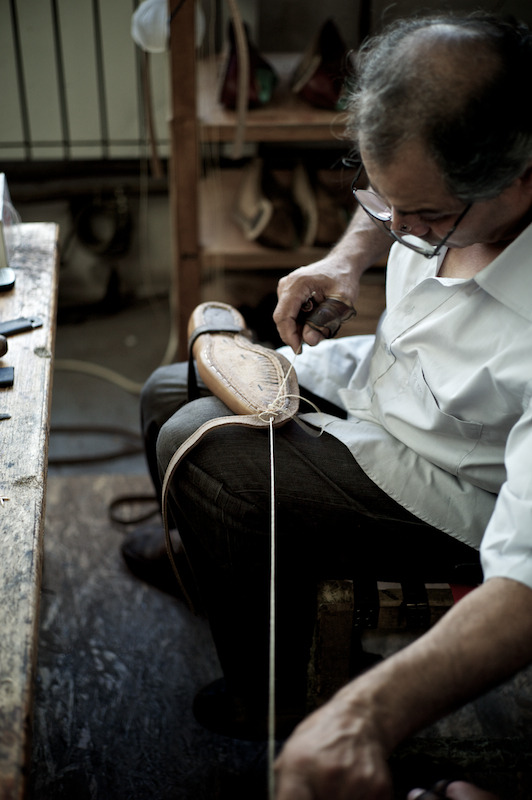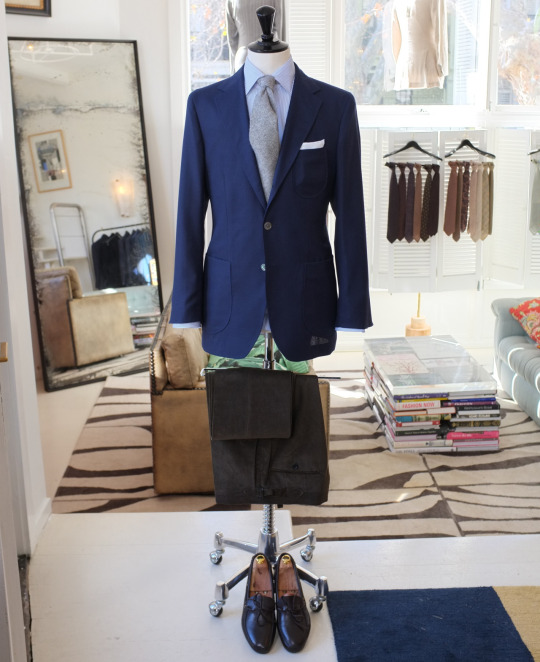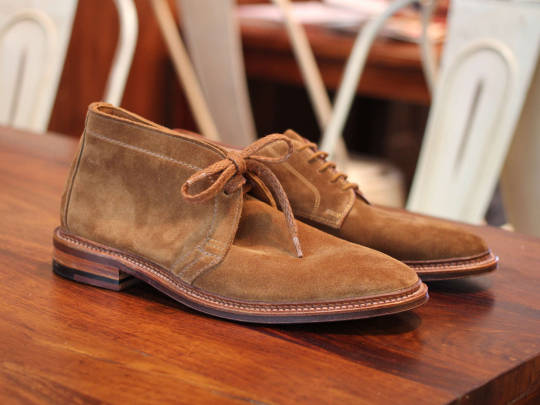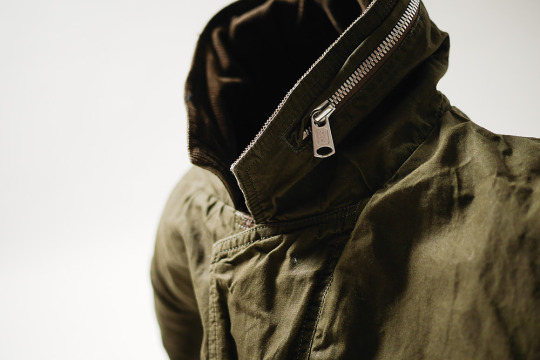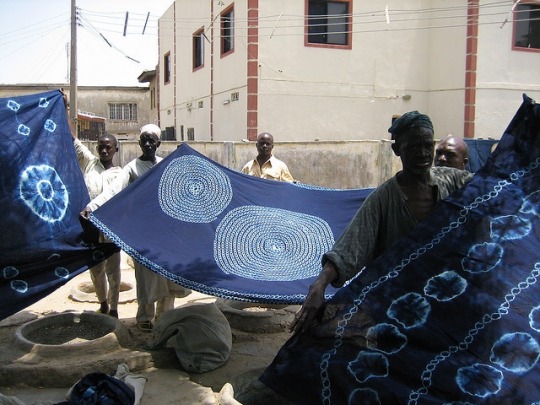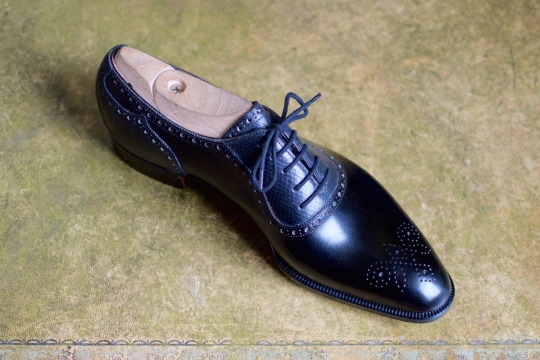
It’s always exciting to see creativity and craft come together. Bespoke shoemaker Nicholas Templeman is coming to the US this month, starting Friday, October 9th. He’ll be visiting New York City, Boston, Chicago, and San Francisco. To prepare for his tour, he’s put together a collection of eight samples – ranging from the sort of conservative oxfords he used to help make for John Lobb of St. James, to dandier styles, such as a bright-colored button shoe.
My favorites from him are somewhere in between – styles that have a bit more flair than a traditional oxford, but are conservative enough to wear with a simple suit or sport coat. The adelaides above, for example, are beautifully made from a smooth box calf, and then distinguished with hatch grain facings and counters. A bit of interesting history: box calf used to refer to a hand curried and boarded leather – called so either because the object they used to prepare the leather was box-like, or because the process created box-like markings. It was supposedly done to help soften the leather, but nowadays, that’s done through the tanning process, so the term box calf just refers to a smooth (usually black) leather, like you see above.


